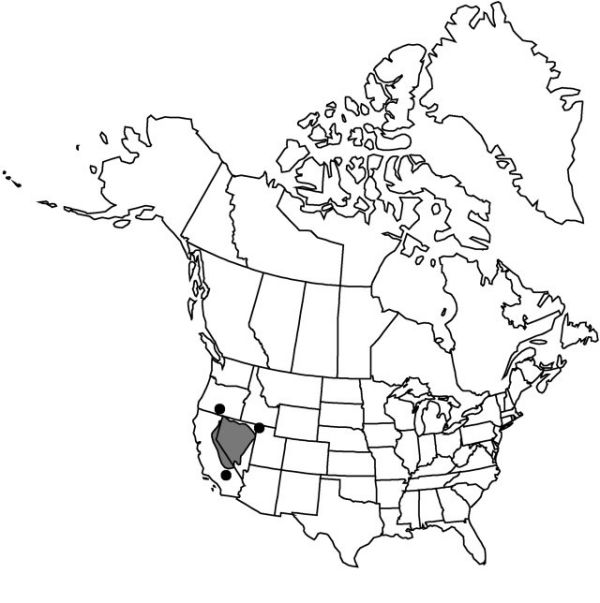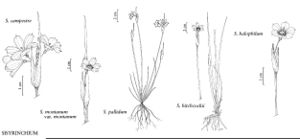Sisyrinchium halophilum
Pittonia 4: 34. 1899.
Herbs, perennial, cespitose, green to ashy olive when dry, to 2.6 dm, often strongly glaucous; rhizomes scarcely discernable. Stems simple, 0.5–3 mm wide, glabrous, margins entire, similar in color and texture to stem body. Leaf blades glabrous, bases not persistent in fibrous tufts. Inflorescences borne singly; spathes usually green, glabrous, keels entire; outer 13–27 mm, equaling or 3 mm longer than inner, tapering evenly towards apex, margins basally connate 2.7–5.5 mm; inner with keel evenly curved to straight, hyaline margins 0.40.6 mm wide, apex broadly rounded or truncate, often erose, often extending as 2 lobes beyond green apex. Flowers: tepals light to dark bluish violet, bases yellow; outer tepals 9–12 mm, apex truncate, aristate; filaments connate ± entirely, stipitate-glandular basally; ovary similar in color to foliage. Capsules beige, ± globose, 2.2–4 mm; pedicel erect. Seeds globose to obconic, lacking obvious depression, 1–1.7 mm, rugulose. 2n = 32.
Phenology: Flowering spring–summer.
Habitat: Moist, grassy areas, stream banks, springs, meadows, especially in alkaline soil
Elevation: 1100–2600 m
Distribution

Calif., Nev., Oreg., Utah.
Discussion
Sisyrinchium halophilum is the most common species of the genus in Nevada and eastern California.
Selected References
None.
